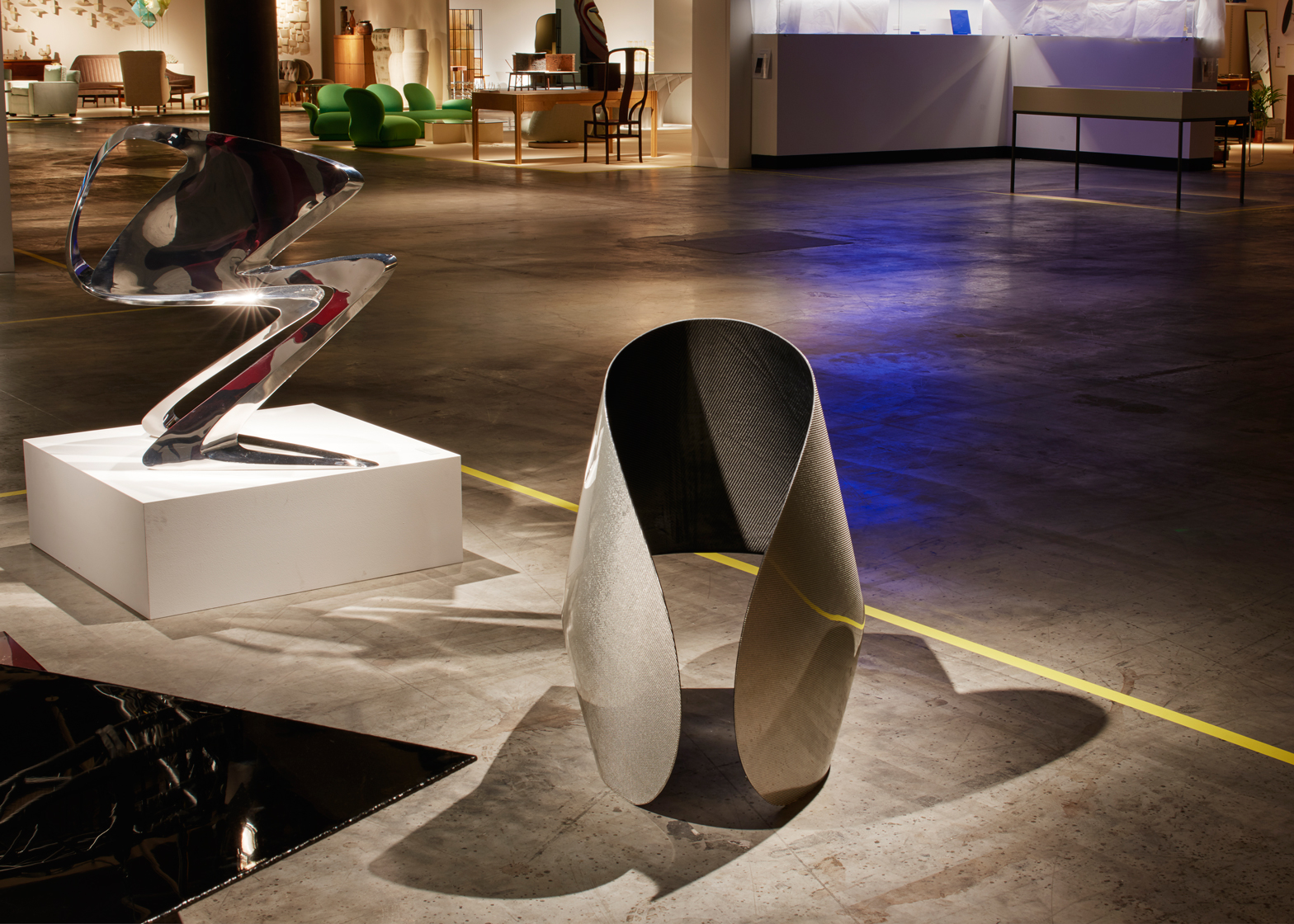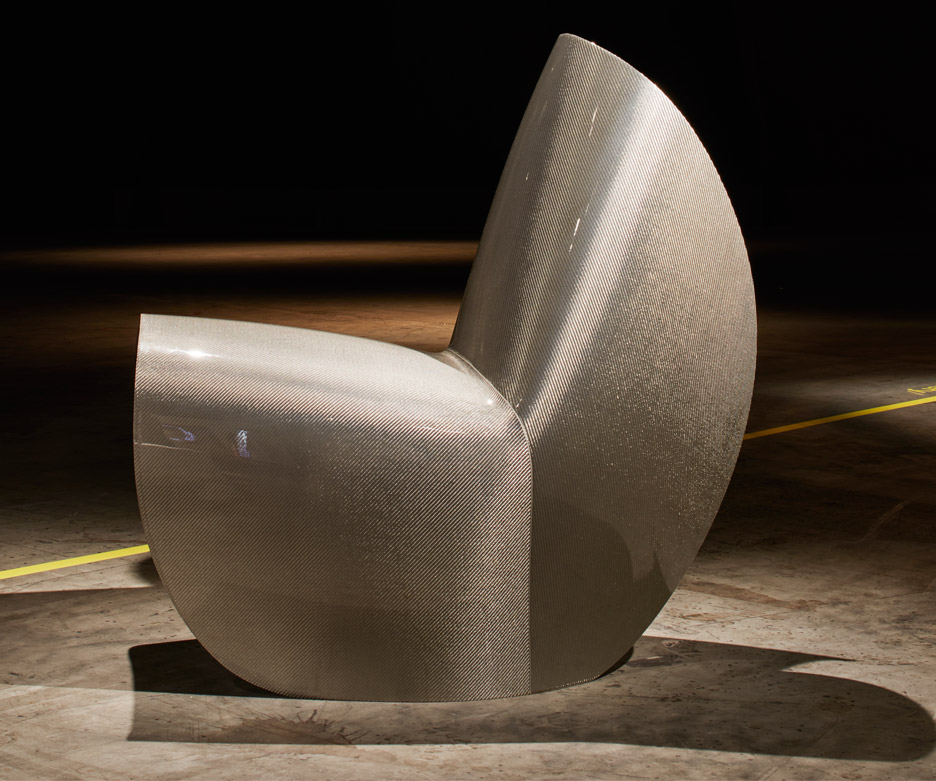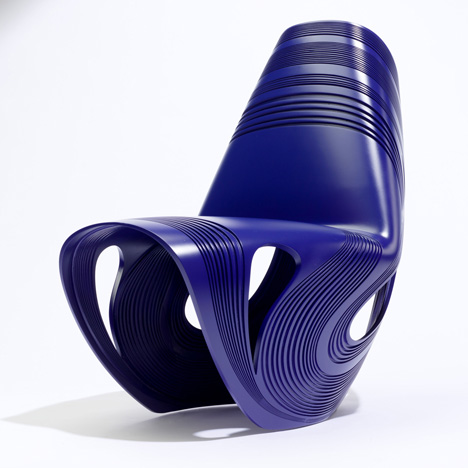Zaha Hadid's folded Kuki chair redesigned using carbon fibre
Design Miami/Basel 2016: the late Zaha Hadid's sculpted plastic Kuki chair has been relaunched in carbon fibre at Design Miami/Basel.
The new version of Kuki is made from a single sheet of Hypetex, a coloured carbon-fibre composite material originally developed by Formula One engineers for cars.
The original chair, created for Italian brand Sawaya & Moroni, was folded from one round piece of plastic.

Hypetex worked with the architect's product design studio, Zaha Hadid Design, to replicate the form of the original in carbon fibre.
The chair is created by creasing a carbon fibre sheet along two vertical lines, so its edges almost meet at the back. It is then given a 90-degree bend in the middle to differentiate the seat and backrest.
"The strength and lightness of the Hypetex material lends itself perfectly to Zaha Hadid's imaginative designs, and the Kuki is another stunning piece of design that reminds us of Zaha's brilliance," said Marc Cohen, CEO of Hypetex.
The chair has been given a shiny transparent finish that allows the grain of the Hypetex material to show through. The pattern created by the material replaces the curved lines that were etched into the plastic version.

Hadid died unexpectedly in March at the age of 65, but her London studio has pledged to continue producing designs under the leadership of her business partner, architect Patrik Schumacher.
The Kuki chair, in both its plastic and carbon-fibre forms, is emblematic of Hadid's flowing aesthetic, which can also be seen in designs like the Mew table for Italian furniture brand Sawaya & Moroni and her silver jewellery for Georg Jensen.
The limited-edition carbon fibre Kuki is launching at Design Miami/Basel, which runs from 14 to 16 June 2016 in the Swiss city and also features an exhibition of Hadid's product design – the exhibition is among Dezeen's picks of the highlights of the collector's fair.
Carbon fibre is appearing in a growing number of products as designers experiment with the material. London-based Michael Sodeau used Hypetex to create a lightweight chair with an oversized, disc-shaped backrest.

Carbon-fibre chairs have also been made by weaving strands of the material by hand – like the Carbon Chair by Marcel Wanders and Bertjan Pot for Moooi – or more recently by robots.
It has been described as architecture's biggest untapped resource by architect and researcher Achim Menges, who claims that robots could be programmed to build stadium roofs using the fibrous building material.
"We're not just looking at a gradual evolution of how things are made," he told Dezeen. "It's a pretty dramatic shift, a kind of fourth industrial revolution."